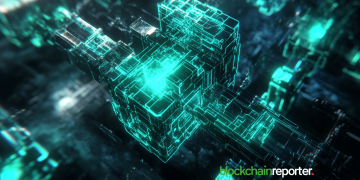AI developments were one of the biggest Web3 narratives of 2024, and its growing at an accelerated pace. Gaming studios are increasingly using developments such as AI agents and LLM-powered Reinforcement learning (RL) to make games more adaptable and unpredictable. From NPCs that think and react like real players to economies that mirror the complexity of real-world markets, these technologies are shaping gaming into something more immersive and personal.
Ilman Shazhaev shares his insights on this next-gen change in game development. Shazhaev is the founder and CEO of Dizzaract, the Middle East’s largest game development studio. He is an intriguing entrepreneur with deep expertise in AI, gaming, and Web3 and holds 10 invention patents. Shazhaev has been at the frontline of blockchain gaming transformation.
In this article, Shazhaev shares his insights on AI integration in blockchain gaming and how NPCs are changing to redefine player experiences.
Q1. How is the AI sector evolving as a dominating factor in blockchain gaming?
AI is growing into the brain behind gaming, especially in the blockchain space. It’s not just about making games smarter; it’s about making them more alive. AI algorithms are now dynamic enough to create interactions that feel genuine. In blockchain gaming, this means players are engaging with NPCs and systems that respond in real time, making every session unique. The gaming experience goes from being predictable to feeling like you’re part of an ever-changing story.
Q2. What role will AI-driven NPCs have in improving gameplay and immersive player experiences?
AI-driven NPCs will change the game—literally. They won’t follow pre-set patterns of designed algorithms anymore. Instead, they will evolve based on how players interact with them and learn from their decisions, adapting behavior and making every encounter feel personal. They will add depth to storytelling, making the narrative react to the players instead of the other way around. It’s like stepping into a world where every character has their own story and personality.
And here’s where it gets fascinating—AI-powered NPCs can create what I call an “Endless Dopamine loop.” They’re designed to keep players engaged by constantly adapting, surprising, and challenging them. You can’t predict what’s going to happen next, and that unpredictability hooks players in, session after session. It is the kind of immersion that makes gaming feel like a dynamic, living experience.
Q3. How can AI-led multifaceted economic systems revolutionize Web3 gaming?
AI has the potential to build game economies that mirror real-world markets. These systems can predict trends, balance resources, and even introduce complex trading mechanics by analyzing player behavior and using on-chain data. This creates an economy that feels alive, where prices fluctuate based on supply and demand, and players can truly engage in meaningful trade. This evolves into an ecosystem where players contribute to and benefit from its growth.
Q4. What are the prevalent use cases of AI agents for optimizations in gameplay and in-game assets?
So, AI agents are like the backstage crew of a game, handling tasks that players don’t always notice but absolutely appreciate. They are great at optimizing matchmaking, analyzing gameplay to adjust the difficulty, and even managing resource allocation in real time.
Also, for in-game assets, AI can predict market trends, create fair pricing models, and suggest upgrades or trades to players. This will enhance the overall experience without players having to overthink.
Q5. How do collaborations like NVIDIA’s ACE and Microsoft’s Inworld AI initiatives influence Web3 gaming?
These collaborations bring serious tech muscle to the table. ACE, for instance, is setting a new standard for how NPCs interact, making conversations feel natural instead of scripted. Microsoft’s work with Inworld AI is all about creating immersive worlds where characters react like real people. These innovations are actively bridging the gap between traditional and blockchain gaming. And the line between Web2 and Web3 games will soon disappear completely. The latter will become the norm and offer engaging and relatable experiences for a broader audience.
Q6. How much of the 16% surge in active wallets in blockchain gaming is credited to AI developments?
AI has played a significant role in that surge. Games with smarter NPCs and more adaptive gameplay are drawing players who might have otherwise stuck to traditional gaming. When the experience feels fresh every time you log in, it’s hard to resist coming back. Plus, AI-powered analytics are helping developers understand what keeps players engaged, ensuring they stick around longer and explore more of what blockchain gaming offers.
Q7. What are the challenges in integrating AI into blockchain games, and how does Dizzaract Studio address them?
One major challenge is striking a balance between on-chain transparency and off-chain computational power. AI often requires heavy lifting in terms of data processing, which doesn’t always fit with blockchain’s decentralized nature.
At Dizzaract Studio, we focus on hybrid solutions. We use AI off-chain for complex calculations while making sure on-chain elements remain secure and verifiable. We’re also big on user feedback, ensuring our AI systems improve gameplay without feeling intrusive.
Q8. How can AI agents assist players in making informed decisions?
AI agents act like personal assistants in gaming. They analyze your gameplay style, suggest strategies, and even recommend which in-game assets might benefit you the most. Whether it’s helping you decide on the next big trade in a game’s economy or suggesting the best loadout for a mission, these agents take the guesswork out of decision-making, letting players focus on the fun part.
Q9. What is AI’s overall contribution to enriching the Web3 gaming sector?
Ironically, AI brings the human touch to Web3 gaming. The simplest way to define AI’s contribution is that it turns static worlds into living, breathing ecosystems. From crafting NPCs that feel like real companions to building economic systems that respond to player actions, AI makes the experience immersive.
AI also helps developers fine-tune their games, ensuring players get hooked on gameplay that feels challenging yet achievable. Essentially, AI makes Web3 gaming feel alive and rewarding.
Q10. What is Dizzaract Studio’s strategy to utilize AI technology to maintain its leading position in Web3 gaming by 2025?
Our approach at Dizzaract Studio is simple: stay ahead of the curve. We’re investing in AI systems that enhance gameplay experience and also create lasting value for players. From adaptive NPCs in Farcana to AI-driven market systems in our upcoming titles, we’re constantly experimenting and refining. We also believe in listening to our community and letting their feedback shape how we integrate AI. By doing so, we’re ensuring our games remain fresh and ahead of the competition.























